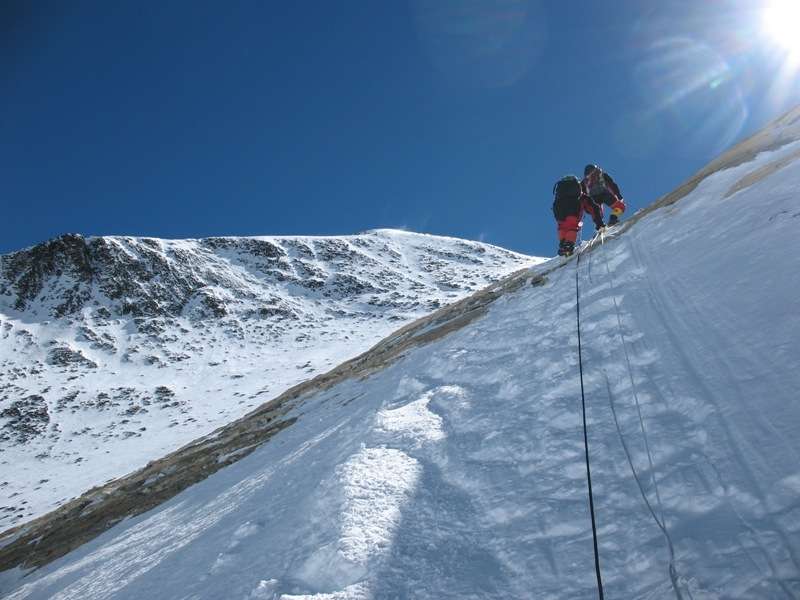Tsewang Paljor
| Tsewang Paljor | |
|---|---|
| Born |
10 April 1968 Sakti, Leh, Jammu and Kashmir, India |
| Died |
10 May 1996 (aged 28) Mount Everest |
| Resting place | Unknown |
| Religion | Buddhist |
|
Police career | |
| Current status | Deceased |
| Department | Indo-Tibetan Border Police |
| Allegiance | Republic of India |
| Rank | Head Constable |
Tsewang Paljor (10 April 1968 – 10 May 1996) was a member of the First Indian team to reach the summit of Mount Everest from the North Col.[1] Tsewang Paljor was one among three Indians who died on the mountain during the 1996 Mount Everest disaster. While descending from the summit, he was trapped in a blizzard, and died due to exposure.[2] His body remained on the mountain until 2014, when it disappeared under questionable circumstances. He is believed by some to be the unidentified climber called "Green Boots" whose body was used by some as a trail marker.[3][4]
1996 disaster
The Everest disaster of 1996 is well known in mountaineering circles for the deaths of eight climbers, which included five climbers from the Adventure Consultants and Mountain Madness expeditions on the southeast route. Lesser-known are the three fatalities on the northeast route. These were the climbers from the Indo-Tibetan Border Police (ITBP) expedition from India. The expedition was led by Commandant (equivalent to Lieutenant Colonel) Mohinder Singh and is credited as the first Indian ascent of Everest from the East side.[5]
On 10 May 1996, Subedar Tsewang Samanla, Lance Naik (equivalent to Lance Corporal) Dorje Morup, and Head Constable Tsewang Paljor were caught in the blizzard, just short of the summit. While three of the six-member team turned back down, Samanla, Morup, and Paljor decided to go for the summit.[6] At around 15:45 Nepal Time, the three climbers radioed to their expedition leader that they had arrived, a claim that was subsequently disputed by Jon Krakauer, who based on an analysis of an interview given by a later Japanese team, believes they may have stopped 150 metres (492 ft) short of the topmost point but may have been confused by poor visibility. They left an offering of prayer flags, khatas, and pitons. Here, the leader Samanla decided to spend extra time for religious ceremonies and instructed the other two to move down.
There was no radio contact after that. Back at the camps below, anxious team members saw two headlamps moving slightly above the second step — at 8,570 metres (28,117 ft). None of the three managed to come back to high camp at 8,300 metres (27,231 ft).
See also
References
- ↑ Tenzing, Judy. Tenzing and the Sherpas of Everest. Harper Collins.
- ↑ Lambert, John. Portraits of the Himalayas. p. 77.
- ↑ Douglas, Ed (15 August 2006). "Over the Top". Outside Magazine.
- ↑ Nuwer, Rachel (8 October 2015). "The tragic tale of Mt Everest's most famous dead body". BBC Future.
- ↑ Singh, Mohinder (2003). Everest: The First Indian Ascent from North. Indian Publishers Distributors. ISBN 81-7341-276-6.
- ↑ Krakauer, Jon (1997). Into Thin Air. Anchor Books. ISBN 03-8549-208-1.
